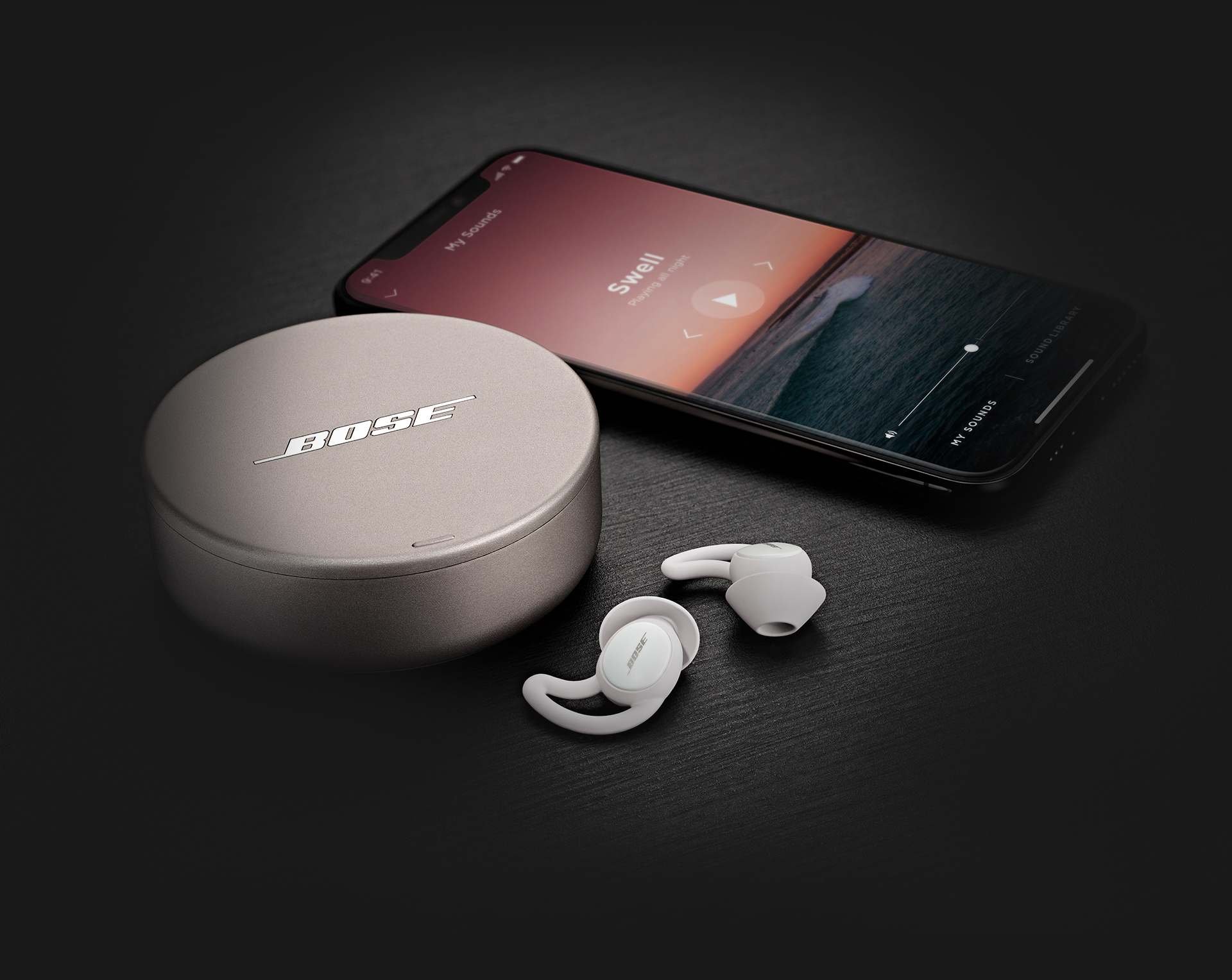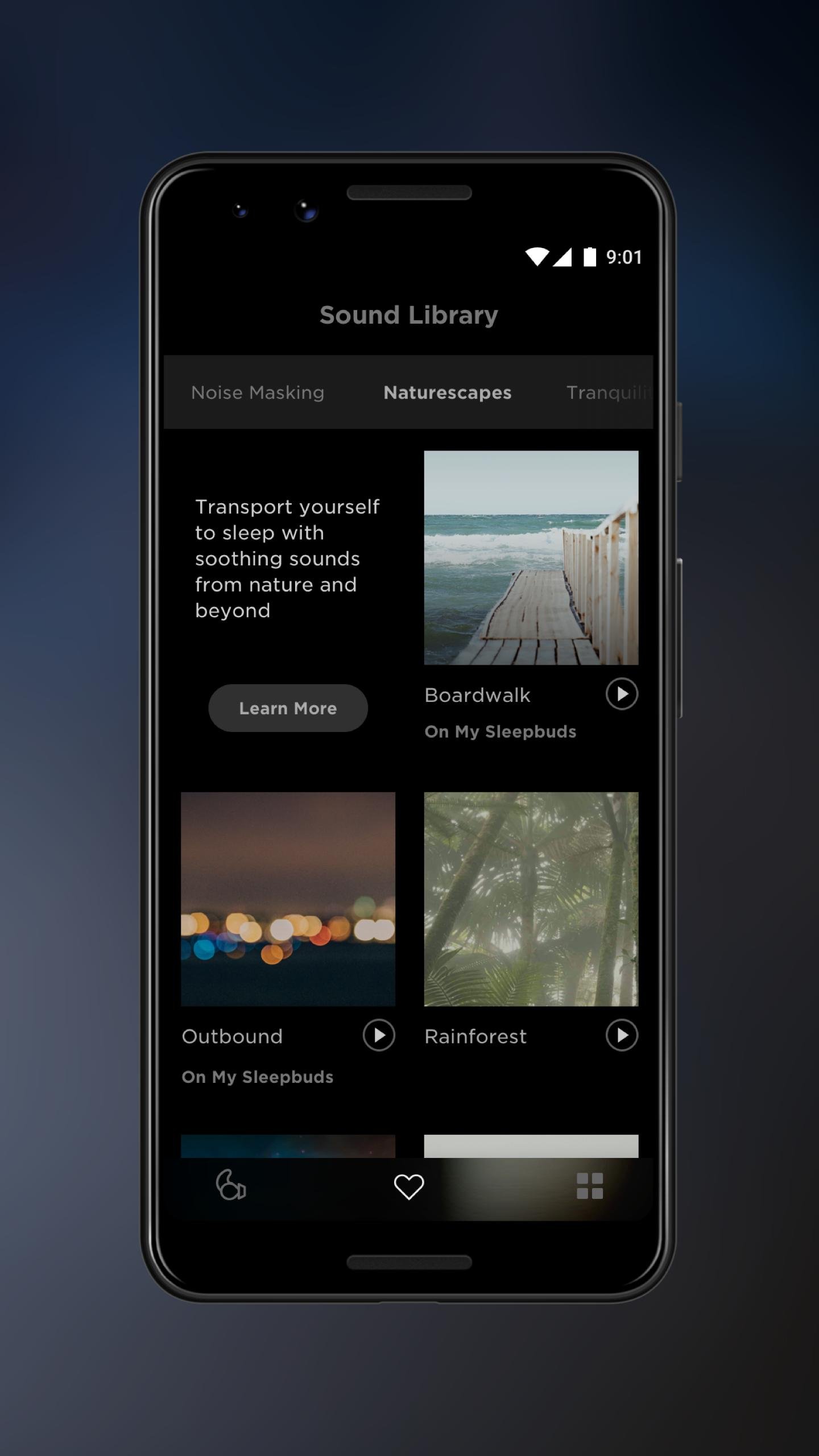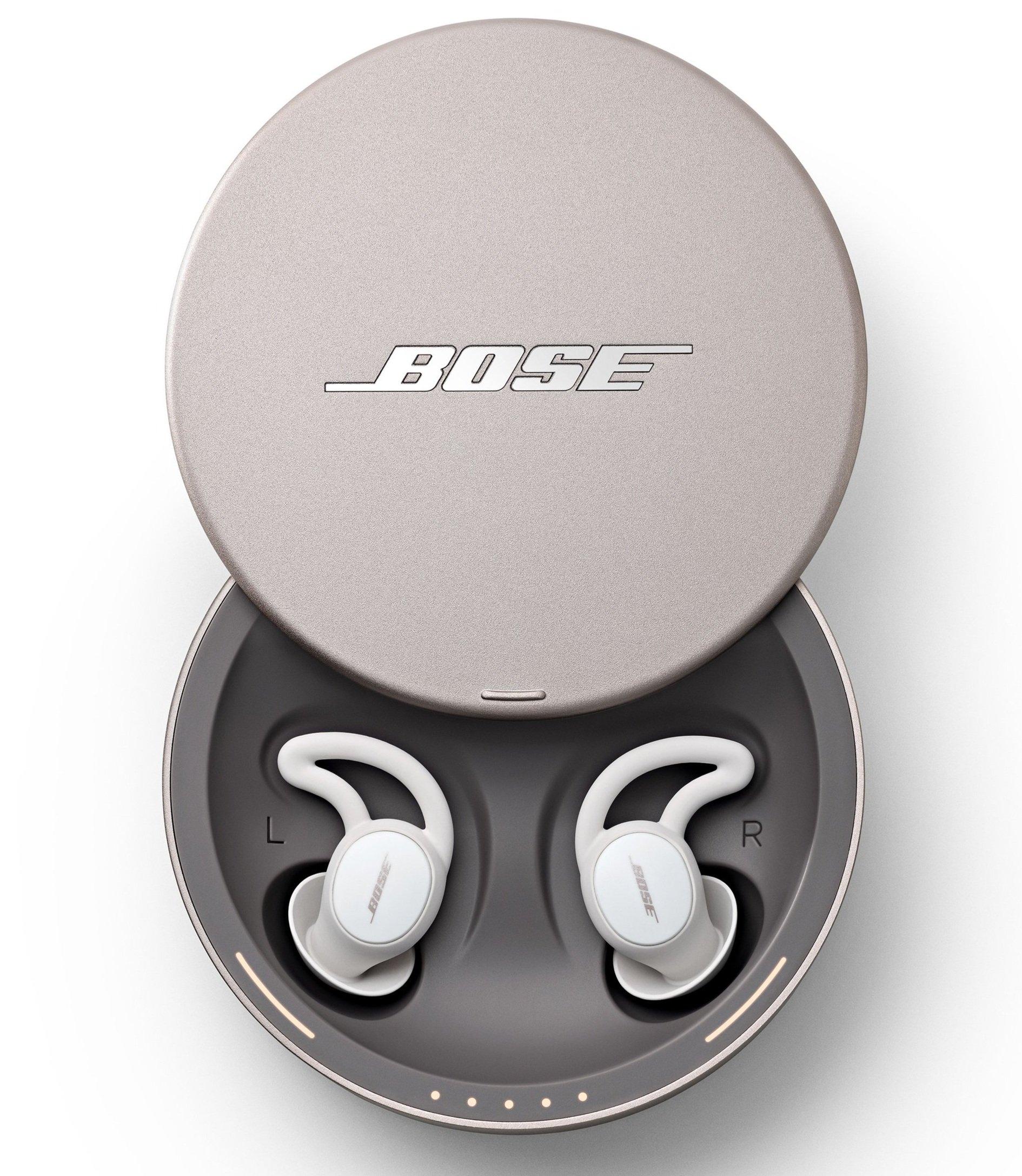Clinical Tech Review: Bose SleepBuds 2
As most people reading my blog know, I’m a licensed clinical psychologist, actively practicing in Illinois. What many people may not know is that I’m also a huge technology nerd, and love to involve tech and gadgets in both my home and work life. This got me thinking…there’s a lot of tools out there that are supposedly helpful for mental health and wellness, but not a lot of psychologists reviewing them for clinical utility. Around that time I also found myself working with several patients who had problems with sleep and insomnia, which got me thinking: what products would be best to recommend to them to help them sleep?
I’m a big fan of using sleep-related meditations and diaphragmatic breathing to help with falling asleep. However, one of the most common barriers for many using this technique is an inability to listen to a meditation without bothering or waking a partner who is in bed with them. You theoretically could use headphones or earbuds for this, but headphones are way too bulky and usually have a wire, and wireless earbuds can fall out during the night and the hard plastic can hurt your ears.
I did some research, and two products really stood out to me as being viable options. I’m reviewing the first here today – the Bose SleepBuds 2, which Bose was kind enough to send for a review. Watch my blog for a review of the second option, coming soon!
Sleep Audio Hardware: A Tricky Design Problem to Solve
Having a quiet environment is important for restful sleep, and the ability to play restful sounds or meditations is also incredibly helpful. However, an additional consideration is required with sleep-related audio devices: balancing battery life with form and function, as an audio device worn during sleep needs to be wireless.
If you own wireless earbuds with your phone, you probably know that the battery life on the earbuds themselves isn’t anything to write home about – generally 3-6 hours, depending on the model. However, these devices often get around this battery constraint by having the earbud case also be a charger, generally providing many additional hours of power without needing to charge the case (often another 12-16 hours).
This works great if you’re using earbuds during the day, but if you’re using them at night you’re not going to take them out, charge them, and put them back in. So designers have to make design choices, as there are tradeoffs between the earbud capabilities, the size of the battery itself, and how long the battery lasts.
For the SleepBuds, Bose made a choice to create earbuds that are essentially free-standing media players – music and audio are stored on the buds themselves, and you are not able to stream content directly from your phone. The upshot to this is that the battery life on the earbuds far more than normal earbuds, and enough to last the entire night without charging (10 hours). The downside is that you’re constrained to the audio library that Bose provides, and can’t directly stream your preferred audio content from your phone.
How well does it work? Read on!
Setup
Setup for the SleepBuds 2 was very easy, walking you through just about everything in the process. I particularly appreciated that it shows pictures of how the earbuds should fit and feel in your ears, helping you feel confident you’re wearing them the right way.
My only gripe with the setup is that the instructions ask you to charge the SleepBuds for 6 hours before you use them for the first time. I opened mine up in the evening, and as a result I had to wait until the next day to start using them. Not the biggest of deals, but definitely but a damper on my excitement.
Build Quality and Fit
These guys are very small and lay flat!
The Sleepbuds 2 definitely are thoughtfully designed, and the attention to detail shows. The thoughtfulness shows before you even put them in your ears, starting with the case – it has a nice weight in your hand, and the bottom has traction pads so that you can open the case with one hand while it is resting on a nightstand. The hinge mechanism for the lid of the case is unique, sliding back and up when you open it, and feels very satisfying to open and close. The lights on the case are soft, and tell you everything you need to know – if the buds are connected for charging, and what the battery level of the case is at.
The Sleepbuds themselves fit extremely well into my ears. This is where you can see Bose really emphasized the physical form factor – they’re small (see image for size comparison) and lay very flush, so that even if you’re laying on your side they won’t push painfully into your ear. There are numerous options for the earbud tips and flanges, so it’s likely that most people will be able to find a very good, tight fit. This is important to ensure the buds do not fall out at night, as well as form a tight seal for passive noise cancelling (i.e., blocking the ear canal like earplugs).
The result of the fit were earbuds that did not fall out once during my testing, and created an extremely quiet space in which to sleep. Add in music or sounds rom the buds, and the result is that ambient noise in your environment is not going to intrude.
Battery
The battery life on the SleepBuds 2 is 10 hours between charges, and the case adds another 3 full charges before it is fully out of batteries. This means you have about 40 hours of sleep/playback time between the buds and the case, or about 5 nights of use between necessary case charges. This is a very forgiving amount of battery life, as charging the case is honestly not much of a hassle. It also means you can take the SleepBuds on short trips and not worry about needing to charge them while you’re gone. I appreciated that the charging port on the case is USB-C, which means that it is relatively future-proofed in terms of not needing to carry around extra charging cables.
App & Audio Content
The Sleepbuds 2 use sounds from an audio library supplied by Bose
Given that the audio content available on the Sleepbuds 2 must come from the Bose-provided app, the quality and quantity of that content is incredibly important. My experience of the audio library was that there was definitely a lot of variety of background sounds and music, but only a few that I actually liked. This isn’t a problem for me, a a critical part of falling asleep for me is not being particularly interested in what I’m listening to. However, if you’re looking for a wide variety of content to listen to (particularly if you’re interested in meditations), this is not the system for you. This limitation is related to the tradeoff mentioned above, where Bose chose a closed system for audio in exchange for all-night battery life with a very small form factor. So while there are other sleep audio solutions that allow you to play any content from a phone or tablet you’d like, these systems have a large battery unit located somewhere, and are not simply wireless earbuds.
Use Experience
As I’ve alluded to above, I found the SleepBuds to be very comfortable, and accomplished their goal extremely well. They didn’t fall out any night that I used them, and the noise isolation was great. I found the experience to be very enjoyable – when you close your eyes and have the sounds playing, it was like being inside a sleep cocoon. I can definitely see how, per Bose’s report on a study they conducted, that 76% of users felt it was easier to stay asleep and 8/10 users felt it improved their sleep quality. These earbuds absolutely accomplish what they were designed to do.
In terms of downsides to the use experience, two aspects stuck out to me. First, one night I took a late shower, and I found I couldn’t use the earbuds because it would trap the water inside my ear canal all night. This isn’t an issue unique to the Sleepbuds themselves, but it’s worth mentioning that if you’re planning to use a personal audio solution for sleep and insomnia, you need to make sure that you give your ears time to dry after a shower before you head to bed.
Second, if you need to be able to hear ambient noises or be woken by softer sounds, these earbuds may not be a good solution for you. As an example – I’m the father of two young children, so the nights that I wore my earbuds I needed to let my wife know that I wouldn’t be able to hear or respond to the baby monitor. Although a loud alarm can be heard well-enough through the earbuds, softer alarms likely cannot. Fortunately, the Sleepbuds do have a built-in alarm to help wake you, with tones that aren’t too jarring. That said, if you use a backup alarm like me in addition to your normal one, it’s worth testing out how well you can hear it before you go to sleep, so you can set it at a volume that will actually wake you up with the Sleepbuds in your ears.
Other Considerations
A major aspects to consider regarding the Bose Sleepbuds 2 jumps at you from the beginning: the $250 price tag. This is a considerable investment for earbuds that can only be used for sleep, and understandably may push away people who feel they cannot afford to spend that much money on a sleep aid. However, a very helpful counterbalance to this is Bose’s 90-night trial period, where you can return the earbuds and receive a full refund. I think this is critical for many consumers, as you can determine firsthand whether you feel the earbuds provide you with $250 worth of value. If these earbuds provide you with a good night’s sleep that you otherwise were struggling to achieve, it’s not a huge stretch to think that this experience would be worth $250 for most people (put differently, it’s 68 cents per day if you use them every day for a year).
Final Verdict
The Bose Sleepbuds 2 are a very interesting product. They’re clearly very thoughtfully designed, well-made, and are targeted at a very specific purpose: small-footprint wireless earbuds with battery life that can last all night without needing to be charged. For this purpose, they’re pretty darn near perfect.
However, the result of this laser focus is that Bose had to sacrifice a constant Bluetooth connection, meaning that the Sleepbuds are unable to play the content that you may really want to hear, such as meditations, your music, or your own chosen background noise. That said, even if you can’t listen to what you initially wanted to hear, the Bose library is pretty good, and my hunch is that most users will be able to find multiple audio sources that they can use to soothe themselves to sleep. However, this does mean that the Sleepbuds can’t be used at all during the day as normal wireless earbuds – they are for sleep, and for sleep only.
All that said, there’s a fairly good chance that the Bose Sleepbuds 2 will be effective for most people in helping them to fall asleep. And if your results vary, Bose’s trial period means that you can try them and return them at no charge. The Sleepbuds are a specialty tool focused on a very specific purpose, and I do think that they accomplish that purpose very well.
So are they worth recommending that your patients with difficulty falling or staying asleep give it a try? If the cost isn’t a barrier, then my answer is a strong “yes” - these things do exactly what they’re supposed to do, they do it well, and your patients can always return them if they feel they’re not worth the price tag. If the price is too high, however, stay tuned for my next review of an audio device with a different focus and at a lower price point.
Dr. Weiner is a board-certified Counseling Psychologist, practicing concierge telehealth out of Lake Forest, Illinois. If you have questions, please reach out!



